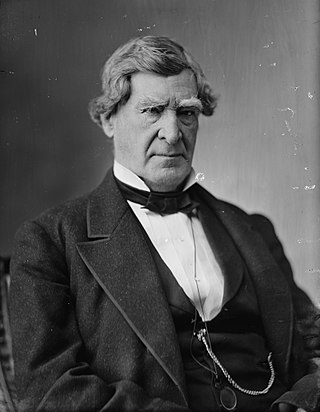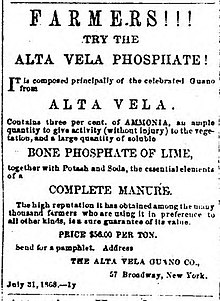
The Dominican Republic is a country located on the island of Hispaniola in the Greater Antilles archipelago of the Caribbean region. It occupies the eastern five-eighths of the island, which it shares with Haiti, making Hispaniola one of only two Caribbean islands, along with Saint Martin, that is shared by two sovereign states. The Dominican Republic is the second-largest nation in the Antilles by area at 48,671 square kilometers (18,792 sq mi), and third-largest by population, with approximately 10.7 million people, down from 10.8 million in 2020, of whom approximately 3.3 million live in the metropolitan area of Santo Domingo, the capital city. The official language of the country is Spanish.

The recorded history of the Dominican Republic began in 1492 when the Genoa-born navigator Christopher Columbus, working for the Crown of Castile, happened upon a large island in the region of the western Atlantic Ocean that later came to be known as the Caribbean. It was inhabited by the Taíno, an Arawakan people, who called the eastern part of the island Quisqueya (Kiskeya), meaning "mother of all lands." Columbus promptly claimed the island for the Spanish Crown, naming it La Isla Española, later Latinized to Hispaniola. The Taínos were nearly wiped out due to European infectious diseases. Other causes were abuse, suicide, the breakup of family, famine, the encomienda system, which resembled a feudal system in Medieval Europe, war with the Castilians, changes in lifestyle, and mixing with other peoples. Laws passed for the Indians' protection were never truly enforced.

Navassa Island is a small uninhabited island in the Caribbean Sea. Located northeast of Jamaica, south of Cuba, and 40 nautical miles west of Jérémie on the Tiburon Peninsula of Haiti, it is subject to an ongoing territorial dispute between Haiti and the United States, which administers the island through the U.S. Fish and Wildlife Service.

Hamilton Fish was an American politician who served as the 16th Governor of New York from 1849 to 1850, a United States Senator from New York from 1851 to 1857 and the 26th United States Secretary of State from 1869 to 1877. Fish is recognized as the "pillar" of the presidency of Ulysses S. Grant and considered one of the best U.S. Secretaries of State by scholars, known for his judiciousness and efforts towards reform and diplomatic moderation. Fish settled the controversial Alabama Claims with Great Britain through his development of the concept of international arbitration.

The Guano Islands Act is a United States federal law passed by the U.S. Congress that enables citizens of the United States to take possession, in the name of the United States, of unclaimed islands containing guano deposits. The islands can be located anywhere, so long as they are not occupied and not within the jurisdiction of another government. It also empowers the president of the United States to use the military to protect such interests and establishes the criminal jurisdiction of the United States in these territories.

Jeremiah Sullivan Black was an American statesman and lawyer. He served as a justice on the Supreme Court of Pennsylvania (1851–1857) and as the Court's Chief Justice (1851–1854). He also served in the Cabinet of President James Buchanan, first as Attorney General (1857–1860), and then Secretary of State (1860–1861).

Pedernales is the southernmost province of the Dominican Republic, including the offshore island of Isla Beata. It was split from Barahona in 1957. Of its 2,074.53 km2, 1,374 km2 belongs to the Jaragua National Park. A third of its population is of Haitian origin, the highest ratio within the country.
Afro-Dominicans are Dominicans of predominant Black African ancestry. They are a minority in the country representing 7.8% of the Dominican Republic's population according to a census bureau survey in 2022. About 4.0% of the people surveyed claim an Afro-Caribbean immigrant background, while only 0.2% acknowledged Haitian descent. Currently there are many black illegal immigrants from Haiti, who are not included within the Afro-Dominican demographics as they are not legal citizens of the nation.

The Captaincy General of Santo Domingo was the first colony in the New World, established by Spain in 1492 on the island of Hispaniola. The colony, under the jurisdiction of the Real Audiencia of Santo Domingo, was granted administrative powers over the Spanish possessions in the Caribbean and most of its mainland coasts, making Santo Domingo the principal political entity of the early colonial period.

The Haitian occupation of Santo Domingo was the annexation and merger of then-independent Republic of Spanish Haiti into the Republic of Haiti, that lasted twenty-two years, from February 9, 1822 to February 27, 1844. While many Haitians view the invasion and occupation of Spanish Santo Domingo as a "unification" of the island designed to protect their country from re-enslavement via the Spanish side, Dominicans consider it as a forced military invasion and occupation. The Haitian occupation's suppression of Dominican culture, forceful redistribution of Dominican wealth, and strict policies based on labor led to growing resentment that culminated in a Dominican movement for national independence, which was attained in February 1844.

Beata Island is a small island on the Caribbean Sea, located 7 km (4 mi) southwest from Cape Beata. Some 12 km (7 mi) southwest of it lies the smaller Alto Velo Island. It is politically part of the Dominican Republic, and is roughly triangle-shaped and fairly flat, with an approximate area of 27 km2 (10 sq mi).

In the history of the Dominican Republic, the period of España Boba lasted from 1809 to 1821, during which the Captaincy General of Santo Domingo was under Spanish rule, but the Spanish government exercised minimal powers because its resources were attenuated by the Peninsular War and the various Spanish American wars of independence. The period ended when Dominican officials declared a short-lived independence on 30 November 1821. In February 1822, Haiti annexed former Santo Domingo, leading to an occupation that lasted until 1844.

The Dominican Civil War, also known as the April Revolution, took place between April 24, 1965, and September 3, 1965, in Santo Domingo, Dominican Republic. It started when civilian and military supporters of the overthrown democratically-elected president Juan Bosch ousted the militarily-installed president Donald Reid Cabral from office. The second coup prompted General Elías Wessin y Wessin to organize elements of the military loyal to President Reid ("loyalists"), initiating an armed campaign against the "constitutionalist" rebels. In riposte, the dissidents passed out Cristóbal carbines and machine guns to several thousand civilian sympathizers and adherents. Allegations of foreign communist support for the rebels led to a United States intervention in the conflict, which later transformed into an Organization of American States occupation of the country by the Inter-American Peace Force. Elections were held in 1966, in the aftermath of which Joaquín Balaguer was elected into the presidential seat. Later in the same year, foreign troops departed from the country.
Alto Velo Island is a small uninhabited island south of the island of Hispaniola in the Caribbean Sea. Its maximum height is about 152 metres (499 ft) above sea level. It lies on an underwater mountain range which continues to Beata Island and the southwestern coast of the Dominican Republic. It has an area of 1.02 km2 (0.39 sq mi) and is 1.4 km (0.87 mi) long, being oval in shape.

Amadeo Barletta Barletta was born in Italy in 1894 and died in the Dominican Republic in 1975. He was a successful Italian entrepreneur who migrated to the Caribbean in the early years of the 20th century and made significant contributions to the modernization of transportation and the media in the Dominican Republic and Cuba. Barletta's unusual business acumen and character allowed him to overcome major adversities. A hurricane destroyed his properties in the Dominican Republic in 1930. Trujillo confiscated them in 1935. Batista seized his businesses in 1941. Fidel Castro expropriated them in 1960.

The annexation of Santo Domingo was an attempted treaty during the later Reconstruction era, initiated by United States President Ulysses S. Grant in 1869, to annex "Santo Domingo" as a United States territory, with the promise of eventual statehood. President Grant feared some European power would take the island country in violation of the Monroe Doctrine. He privately thought annexation would be a safety valve for African Americans who were suffering persecution in the U.S., but he did not include this in his official messages. Grant speculated that the acquisition of Santo Domingo would help bring about the end of slavery in Cuba and elsewhere.
White Dominicans are Dominican people of predominant or full European descent. They are 17.8% of the Dominican Republic's population, according to a 2021 survey by the United Nations Population Fund. The majority of white Dominicans have ancestry from the first European settlers to arrive in Hispaniola in 1492 and are descendants of the Spanish and Portuguese who settled in the island during colonial times, as well as the French who settled in the 17th and 18th centuries. Many whites in the Dominican Republic also descend from Italians, Dutchmen, Germans, Hungarians, Scandinavians, Americans and other nationalities who have migrated between the 19th and 20th centuries. About 9.2% of the Dominican population claims a European immigrant background, according to the 2021 Fondo de Población de las Naciones Unidas survey.

Luis Rodolfo Abinader Corona is a Dominican economist, businessman, and politician who is serving as the 54th president of the Dominican Republic since 2020. He served as the Modern Revolutionary Party candidate for President of the Dominican Republic in the 2016 and 2020 general elections.

iliana emilia García is a Dominican-born, American visual artist and sculptor known for large-scale paintings and installations. She is a co-founder of the Dominican York Proyecto GRÁFICA (DYPG) Collective. She currently lives and works in Brooklyn, New York. She is represented by ASR Contemporáneo.

The history of U.S. foreign policy from 1861 to 1897 concerns the foreign policy of the United States during the presidential administrations of Abraham Lincoln, Andrew Johnson, Ulysses S. Grant, Rutherford B. Hayes, James A. Garfield, Chester A. Arthur, Grover Cleveland, and Benjamin Harrison. The period began with the outbreak of the American Civil War 1861 and ended with the 1897 inauguration of William McKinley, whose administration commenced a new period of U.S. foreign policy.

















